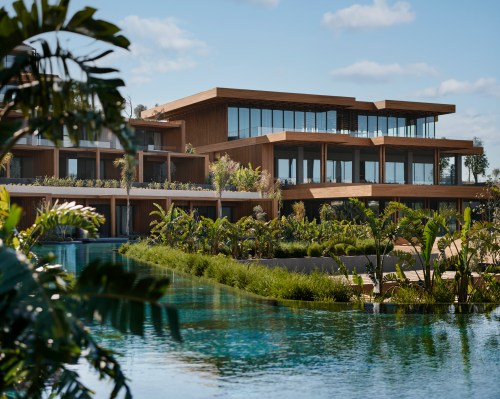How To Care for a Palm Plant, One of Humankind’s Longest-Running Faves
Palm plants are a diverse category, but most found in the home require similar care; here, an expert from NYC plant shop The Sill offers tips.

Palm is big umbrella category that harbors a variety of plant species, many of which are pricey; however, if you can spring for the investment, they do bring a certain something to a space. In fact, according to Erin Marino, director of marketing for NYC-based plant shop The Sill, humans have long had a thing for palms. “Scientists believe Mesopotamians cultivated the date palm over 5,000 years ago,” she says.
Below, Marino offers general pro care tips for whichever type of palm you might choose, whether it’s the common and budget-friendly Parlor Palm, the classic Majesty Palm, a low-maintenance Bamboo Palm, or any others.
How much light a palm plant needs
Because they are native to tropical and subtropical environments, Marino says most palm plants love sunshine. “If you have a variety of palm at home as a houseplant, you should most likely keep it in a spot that receives bright direct to indirect sunlight,” she advises.
How to water your palm plant correctly
For most palm houseplants, Marino advises watering once about every one to two weeks, depending on the amount of sunlight the plant receives and the time of year. “More sunlight and the summer growing season might have you watering more frequently, while less sunlight and semi-dormancy during the winter will have you watering less frequently,” she says. “Let your palm’s potting mix dry out completely in between waterings to avoid overwatering and potential root rot.”
You’ll also want to pay attention to the humidity levels in your plant’s environment. “Some palms call moist, humid environments home, while others are actually native to arid deserts,” says Marino. “If you’re curious whether your palm can benefit from a little extra humidity, it’s best to give its name a quick search to see what type of environment it calls home.”
The right temperature for your palm plant
Marino says that when it comes to keeping your palm plant cozy, your best bet is to aim for mildly warm temperatures of around 70 degrees Fahrenheit. “I like to think most plants like the same temps as most people,” she says.
How to pot your palm plant
Since palms can have significant trunks or stems, Marino suggests giving them extra space when repotting; just be careful not to use a planter that’s too large or you may accidentally overwater your palm. “Because you’re letting your palm’s potting mix dry out completely in between waterings, having a drainage hole won’t make or break your planter choice,” adds Marino. “If you opt for a planter without a drainage hole, simply be a little more mindful when you water about the amount of water you’re using and line the bottom of the pot with lava rocks or similar—to create crevices for excess water to drain into—before adding your favorite potting mix.”
Where to buy a palm plant
1. Plant Shop, $195
This Seattle-based shingle sells a number of different palms. This one is a Bamboo Palm, which is an easy beginner’s indoor plant as it’s relatively low maintenance. They can grow to be up to 12 feet tall, however, so keep that in mind when purchasing. And if the significant price tag on this plant gives you pause, at least you know some of your hard-earned dollars are going to a good cause given Plant Shop is currently donating 20 percent of its profits to Black Lives Matter.
2. The Sill, $38
The Sill has a couple of palm options, too, and Marino’s favorite is this pet-friendly Parlor Palm. “Fun fact: this houseplant has been cultivated since the Victorian era because of its resilience to indoor conditions,” she says. Indoors, the Parlor Palm prefers bright but indirect sunlight; it can tolerate lower light levels, but it will not do well in direct sun.
3. Bloomscape, $195
This dramatic-looking Cat Palm from online plant purveyor Bloomscape is no drama when it comes to care. It’s a slow-growing, bushy palm shrub with a dramatic look.












